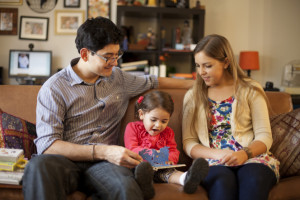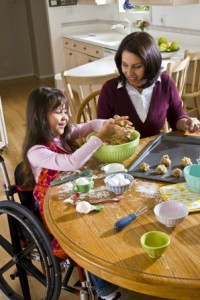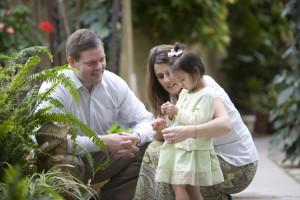The Power of Inquiry Learning
When kids write biographies, as I discussed in my last post, they engage in thinking of questions, asking them, and getting feedback.
 What is the power of asking questions? Think about it—you just spent a second feeling curious about the answer to this question, and you read on to find out more. Children—and all learners—discover and remember more when they are curious about finding out the answers for themselves. This type of learning is called inquiry or discovery learning.
What is the power of asking questions? Think about it—you just spent a second feeling curious about the answer to this question, and you read on to find out more. Children—and all learners—discover and remember more when they are curious about finding out the answers for themselves. This type of learning is called inquiry or discovery learning.
Moving away from traditional telling
As a student or a child, how many times have you sat through a lecture without participating in any way? Do you remember anything from that lecture?
How would it be any different for children who hear, “You need to sit quietly,” “You don’t fold it like that, it’s like this,” or any other phrase that is more of telling than inviting to learn? We might say that this is the kind of thing that goes in one ear and out the other.
Elder David A. Bednar has expressed that teaching is more than talking and telling. As teachers help children to become active learners—which includes asking questions and helping children ask questions—they will better remember and understand concepts.
How does this advice apply to parents? In a recent BYU forum address called “The Power of Not Knowing,” Liz Wiseman describes her struggle with rounding up her three young children—the “6, 4, 2 combo pack,” as she refers to their ages—and the constant telling what to do to get ready for bed: brush your teeth, get in your PJs, pick a book. Complaining to a friend, she received the advice to speak with her kids only in the form of questions. Intrigued, she began that night. “Kids, what time is it?” “Bedtime?” they chorally responded. “What do we do first?” “Brush our teeth?” She was surprised that they knew what to do and she didn’t have to tell them to do it. Start the video around 31:30 to hear her experience.
Helping children become active learners
In my elementary education classes, we learn a lot about helping children learn through inquiry. Inquiry includes asking questions and helping children ask questions, express their own ideas, and try things out for themselves.
Powerful questions. Teachers in various settings quickly learn that there are different types of questions to ask learners. Some questions shut down conversation because they only invite a yes or no answer or one-word answers. Rather than looking for one right answer, powerful questions invite many different responses.
 One of the benefits of helping children discover their own questions, as the YouthLearn initiative suggests, is that “when students choose the questions, they are motivated to learn and they develop a sense of ownership about the project.”
One of the benefits of helping children discover their own questions, as the YouthLearn initiative suggests, is that “when students choose the questions, they are motivated to learn and they develop a sense of ownership about the project.”
Discussion. Eighty percent of what we learn is through discussion, as one of my professors frequently reminds students reluctant to participate. Involving children in discussions—whether about academic or family-related topics—will help them increase their confidence in having opinions and in interacting with others.
Hands-on learning. Some classmates and I interviewed students all over our university campus about the best way to learn science. The overwhelming response was that students learn science best through hands-on learning—getting in there and doing it, rather than reading about it or only watching demonstrations.
Here are some ways that parents can help their children ask questions, discuss ideas, and learn in hands-on ways:
- Go for a nature walk or to a museum and model how to ask questions about the surroundings.
- Ask children, “What do you think about . . .?” and listen to their answers.
- When young children ask questions you don’t know the answer to, find a book or other resource and look up the answer together.
- Help children try out daily tasks by modeling first what to do and having them practice. Refrain from telling them what is wrong, but encourage them to try again.
- Show children a picture or an object and ask what they know about it and what they want to know about it.
—Leah Davis Christopher, Stance
Images credited to LDS Media Library. Link to license here.
You must be logged in to post a comment.